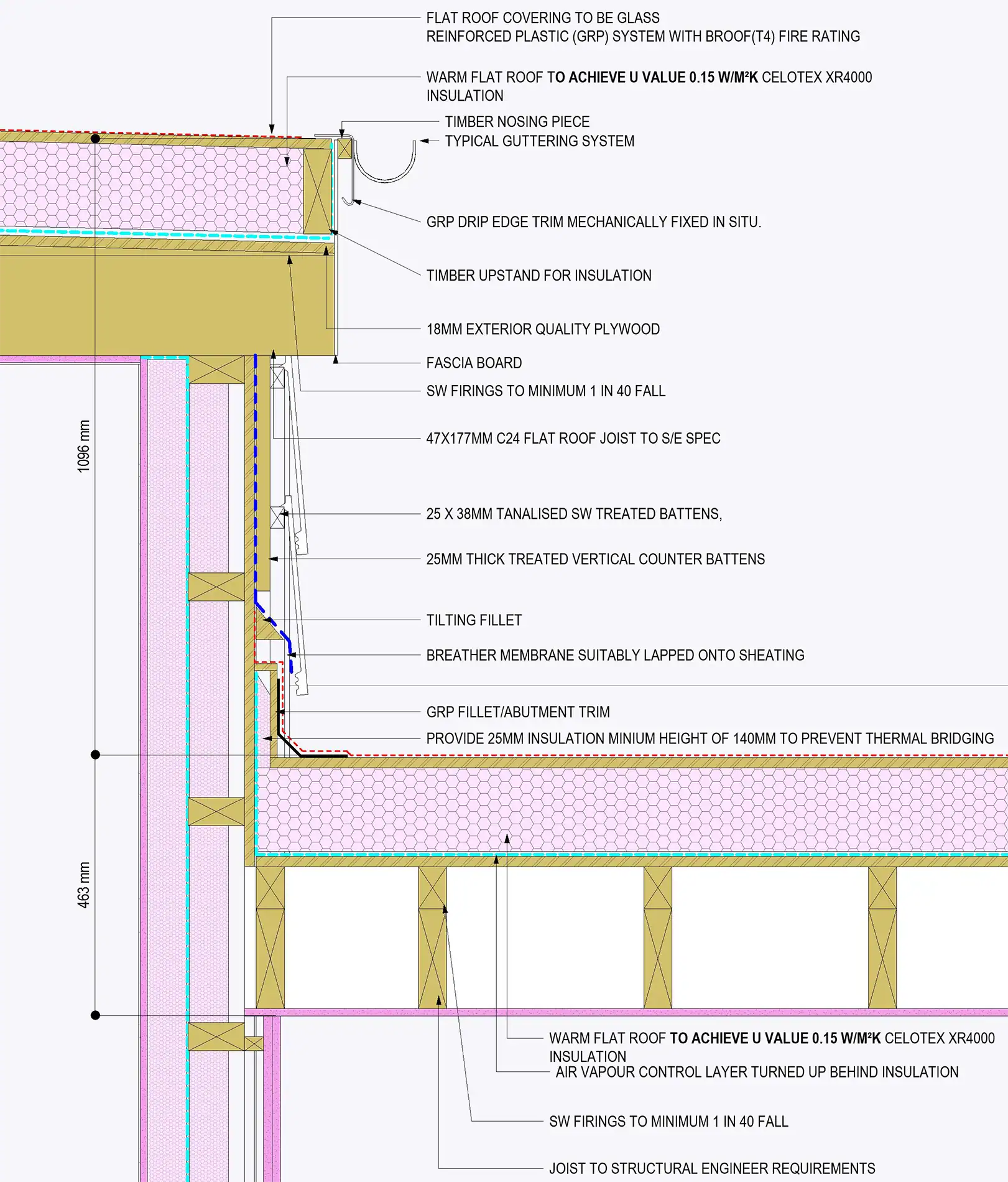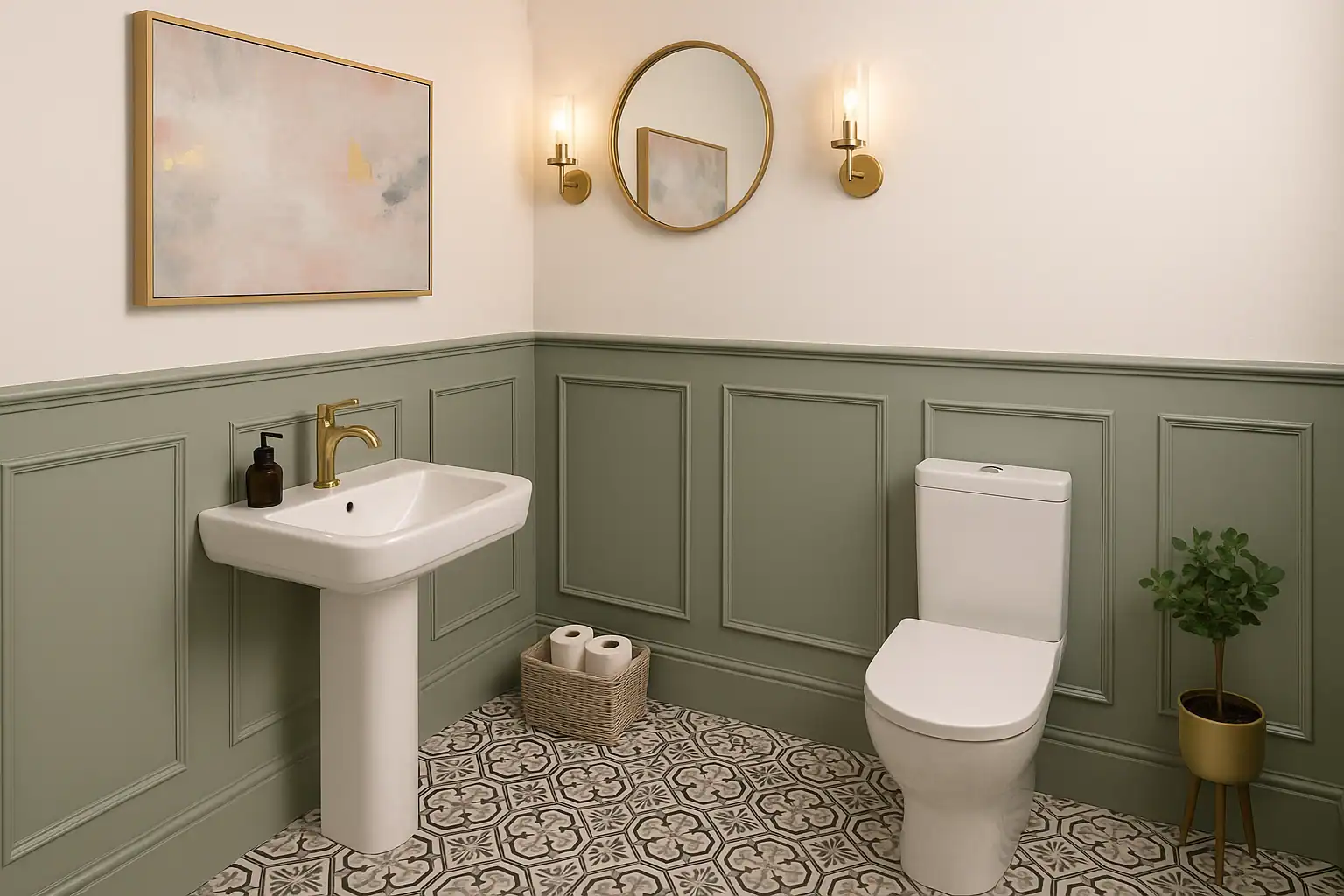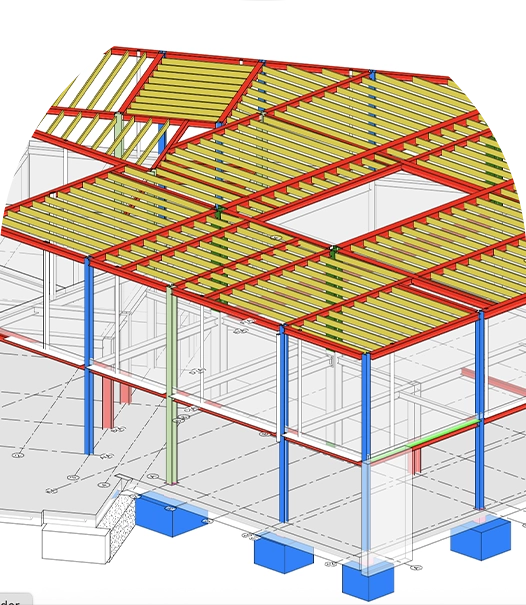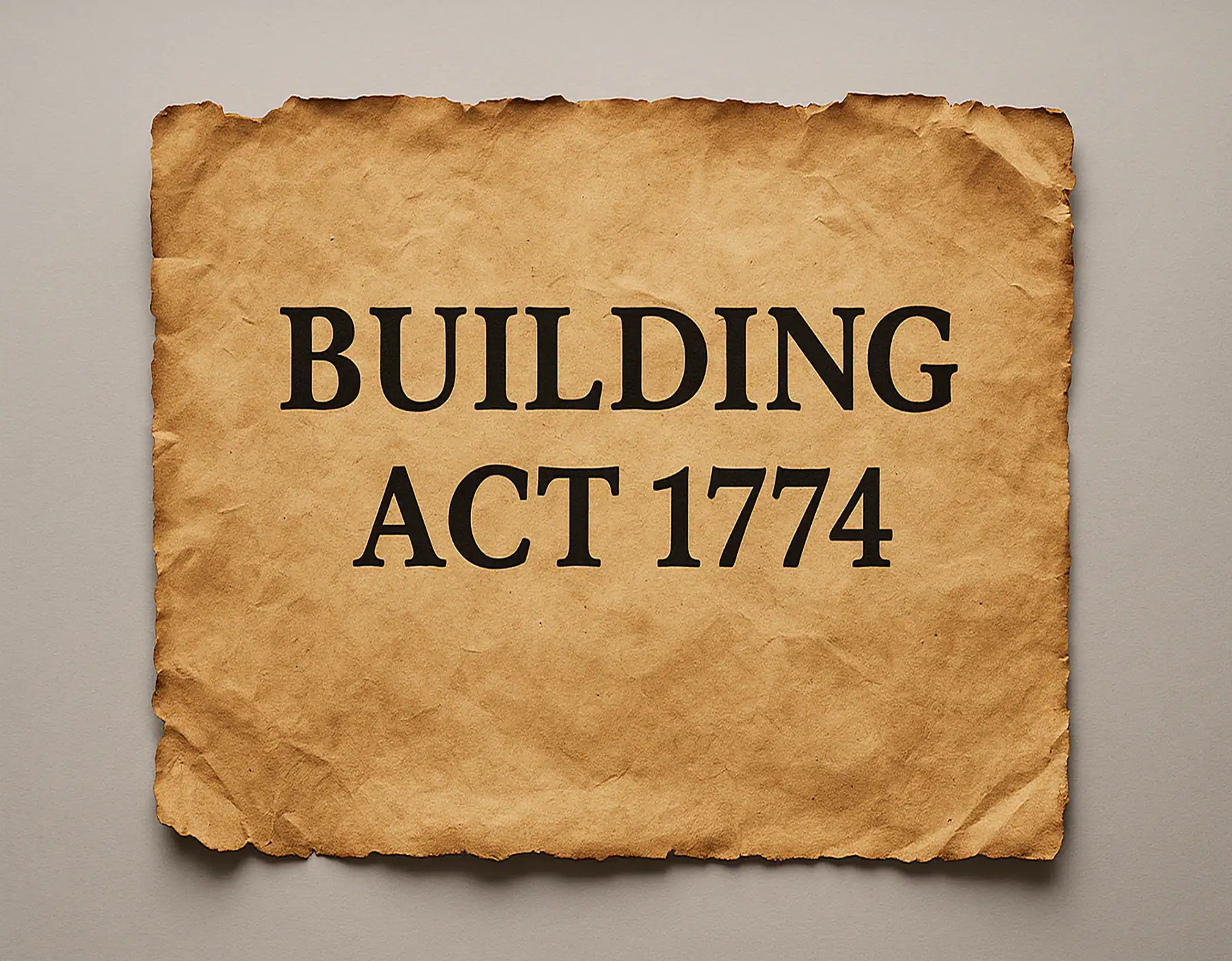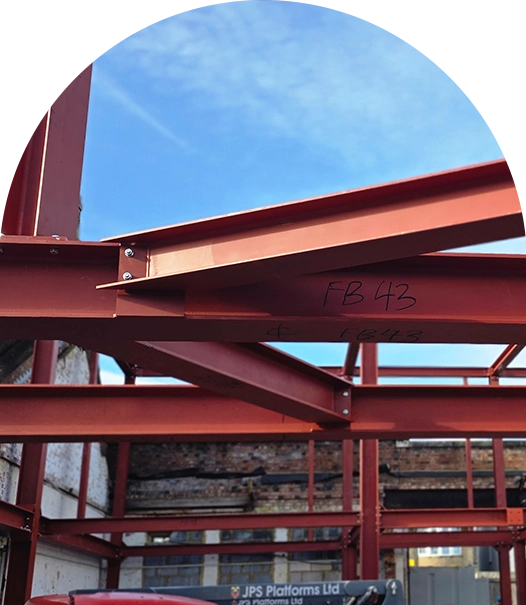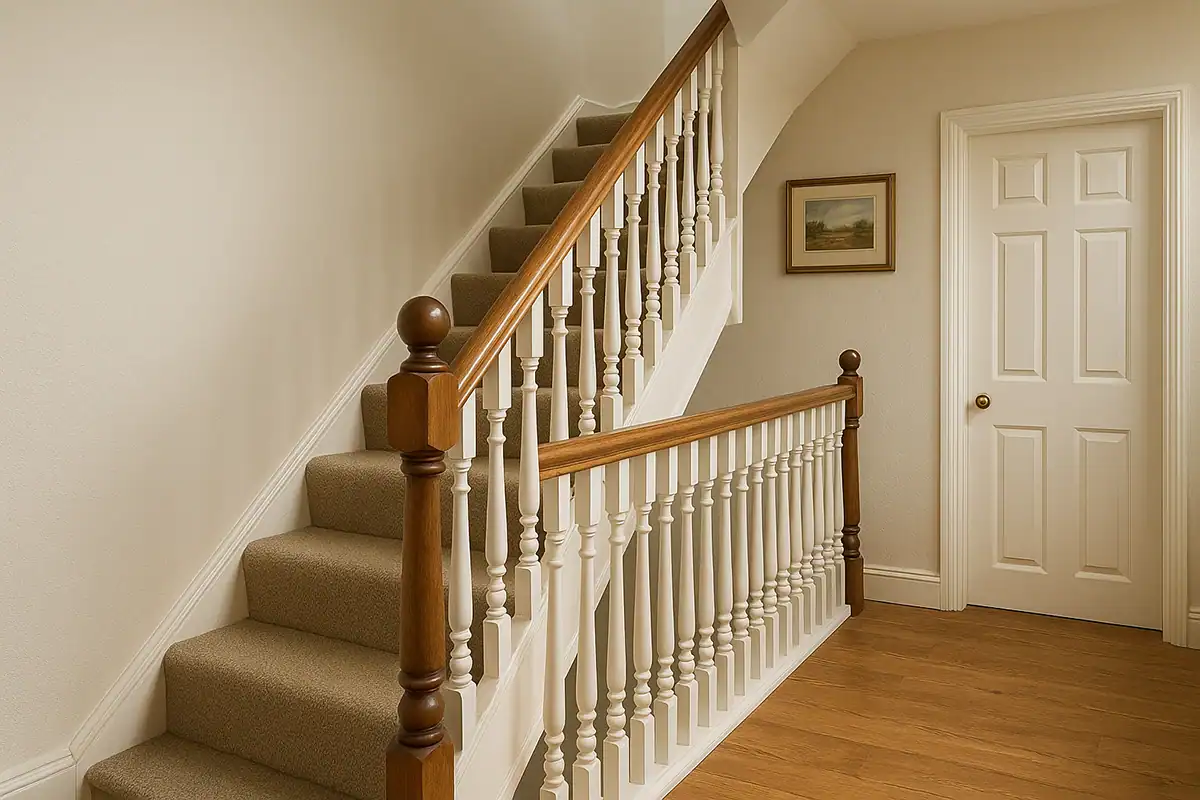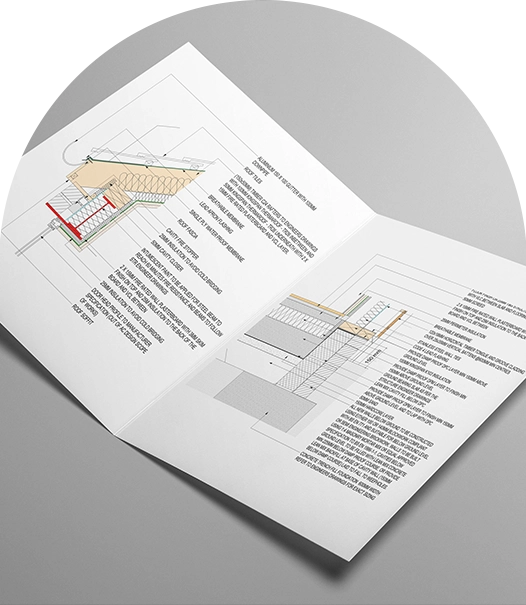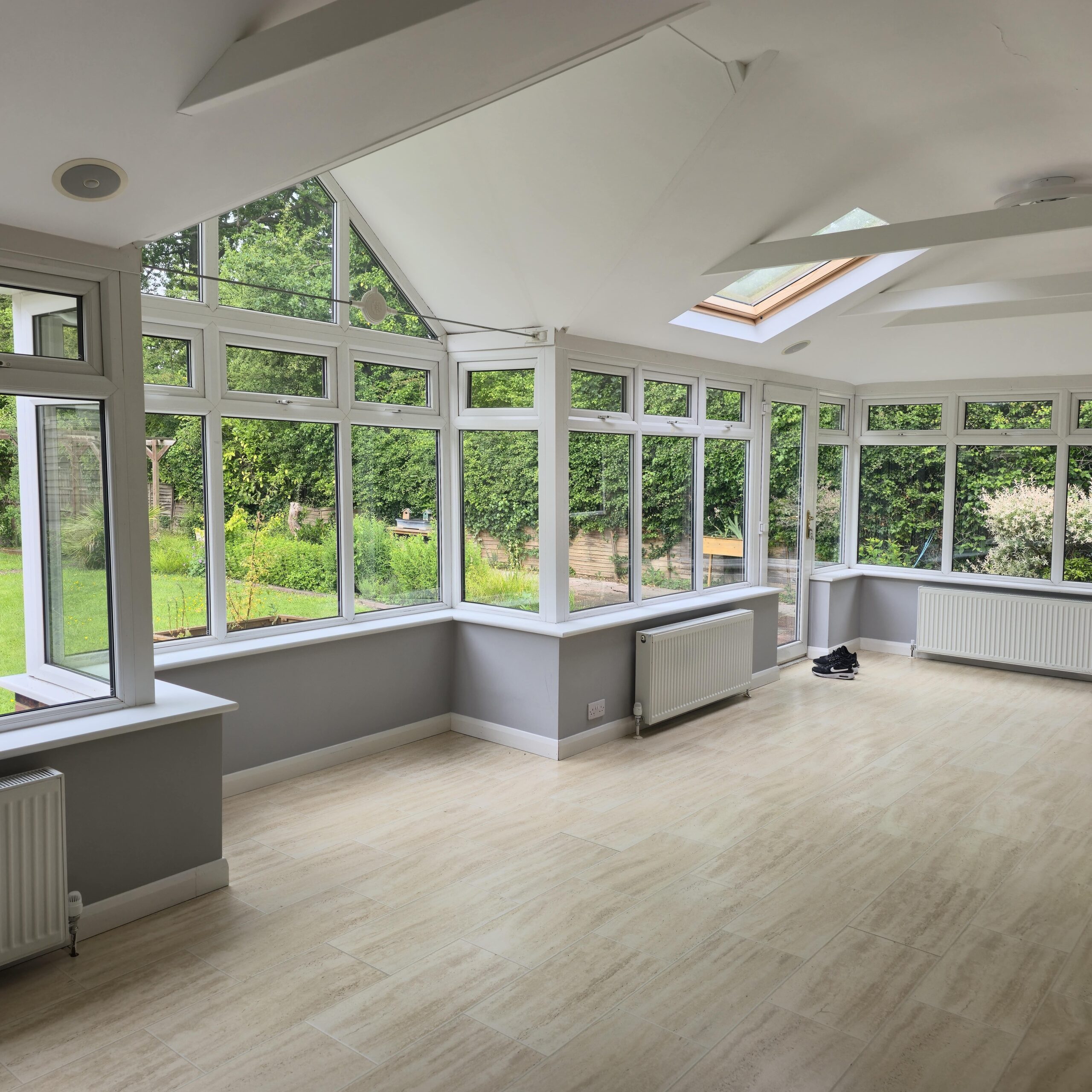What is a Dormer?
A dormer adds a window part to your roof. This makes a wall where the roof slopes. This gives you more headroom and floor space. The dormer becomes part of your roof. It gives more space than normal roof lights.
A dormer changes your space. It adds windows and walls. This lets you convert a loft that had low headroom before. The conversion adds lots of floor space. It gives better light.
AC Design Solution are London-based architects and engineers. We have done over 10,000 UK projects. We know that a dormer adds light and space. Every conversion we design makes the most of your space. We make sure it follows all rules.
When adding dormers to your loft, the space grows a lot. The work involves changing the roof. This makes new space with headroom.
Types of Dormers
Different types suit different roofs. Learning about types helps you pick the right one. Here are the main types:
Shed Dormer
A shed dormer has one flat roof. It slopes down. This type gives great value and max headroom. Shed dormers work well on rear slopes. Planning rules are easier there.
The shed gives more space than a gable. It keeps a simple roof design. When you install this design, you get the most new space. You don’t need hard changes.
Flat Roof Dormer
The flat roof gives max space. It has minimal visual impact. This type uses flat roof building with drainage. Flat roofs need care with building rules. This covers insulation.
A flat roof gives the most floor space. The design works well when you need to maximize space. It keeps the roof pitch on either side.
Mansard
A mansard makes a steep roof section. It gives max floor space. This style gives the biggest increase. But it usually needs planning permission. This is because of the big roof change.
The mansard makes almost upright walls. This gives max headroom. When it comes to types that maximize space, mansard gives the best return. They cost more at first.
Hip to Gable
For houses with hipped roofs, hip to gable extends the roof. This makes a full gable end. It gives space for adding windows. You don’t need hard reconstruction.
Hip to gable works well for semi-detached houses. This is where you want to maximize space. The conversion makes the foundation for adding windows.
L-Shaped Dormer
An L-shaped dormer wraps around corners. This is useful for terraced houses. Maximizing space matters most here. This type gives more space than a gable.
L-shaped types suit properties where one dormer won’t give enough space. The L-shaped design makes the most of the roof area.
Gable-Fronted Dormer
Traditional gable-fronted have triangular roof sections. These match the main house style. This type gives good headroom. It keeps visual harmony.
Gable-fronted types give excellent light. They respect traditional building styles. The gable design suits properties where planning permission needs nice changes.
Everything You Need to Know About Suitability
Not every property can have a dormer. But most homes can fit some type. Learning about suitability helps your project succeed. Several things determine if your space can handle this:
Space Needs: Your roof must have enough height and strength. Most work well if the roof pitch is over 35 degrees. It also needs good ridge height. The space must justify the cost.
Structure Check: You need enough space to justify the cost. The work involves changing the roof. So you need good room height. Converting needs proper support.
New Space: An engineer may need to check capacity. This is true for larger types. The increase must be strong. It can’t hurt the roof.
Planning Permission: Some conservation areas or listed buildings have limits. Check if you need to apply for planning permission before you start your project.
Properties with good space usually make excellent candidates. When converting, think about both the current roof and the new space you can create.
Dormer Loft Conversions on Semi-Detached Houses
Semi-detached houses are excellent candidates for dormers. The shared wall provides structural stability. The independent roof structure allows for various dormer styles. For semi-detached properties, rear dormers often fall under permitted development rights. This reduces planning complications.
However, you must consider party wall implications if your dormer involves work near the shared wall. Professional party wall advice ensures compliance with neighboring property rights.
Do Dormers Need Planning Permission? Everything You Must Know
Planning permission rules depend on size, location, and local planning policies. Learning when you need planning permission prevents costly delays. Many rear dormers fall under permitted development rights. This lets you install them without formal planning applications.
Permitted Development Rights: Rear dormers up to specific sizes usually qualify for permitted development. Your conversion must meet strict rules about:
- Max projection from the roof slope for your type
- Distance from boundaries for the conversion
- Overall volume limits for the new space
- Materials and design standards for windows
When You Need Planning Permission: Front-facing conversions usually need planning permission. So do oversized rear dormers. Or properties in conservation areas. The type chosen must follow local planning guidelines.
Conservation Areas: Properties in conservation areas have limited permitted development rights. Most conversions in these areas need planning permission. This applies no matter what size or location.
Listed Buildings: Listed properties need listed building consent plus planning permission for any work.
AC Design Solution advises that when in doubt about planning permission, professional assessment prevents costly mistakes and project delays. Our experience with over 10,000 projects helps determine the planning needs for your specific conversion.
Dormers and Building Regulations
All conversions must follow building regulations. No matter what planning permission status. The conversion must meet standards for:
Structural Safety: The conversion needs structural calculations. This makes sure the roof can support extra loads. This often involves structural engineering input.
Fire Safety: New space must include proper escape routes. And fire-resistant construction. Adding windows can improve emergency exit options.
Insulation Standards: The conversion must meet current thermal efficiency requirements. This is under Part L of building rules.
Staircase Rules: Converting needs compliant access stairs design. These meet Part K rules for rise, going, and safety.
Sound Insulation: Party wall properties need appropriate sound insulation. This is between neighboring properties.
Building rules approval makes sure your conversion meets all safety standards. And performance standards. AC Design Solution handles the complete building rules submission process. We work with local building control officers on your behalf.
How Much Does an Architect Charge?
Architect fees vary a lot based on project complexity and service level. Here’s what to expect:
Full Architectural Service: Traditional architects typically charge 8-15% of total project cost for complete services. This includes design, planning, building rules, and project management.
Drawing-Only Services: Many projects only need technical drawings and building rules submissions. AC Design Solution provides CIAT qualified building regulation drawings at much lower costs than full architectural services.
Online Architectural Services: Digital practices like AC Design Solution offer 50% cost savings compared to traditional architectural practices. We maintain professional standards.
Additional Services: Structural engineer involvement may be needed for complex conversions. This typically costs £800-2,500 depending on calculations needed.
Most enquiries can be handled efficiently through streamlined online processes. This reduces both costs and timelines.
Everything You Ever Wanted to Know About Adding Dormers
Adding a dormer changes your space into valuable living areas. When you need to know about dormer installation, learning the complete process helps your project succeed. The dormer involves careful planning, design, and construction phases.
The Dormer Process: Complete Guide
Adding windows needs expert knowledge of roof structures and building rules. Your specialist starts by checking your space. They determine the best type of dormer for your property. The conversion adds both structural elements and architectural features to create your new space.
Understanding how long does a loft conversion take helps you plan your project timeline effectively, especially when dormers are involved.
When converting your loft with dormers, the process involves:
Design Phase: Creating detailed plans that maximize space. The plans must follow planning permission rules. The dormer design determines how much new space you’ll gain.
Structure Check: An engineer checks your roof’s capacity. This makes sure the conversion adds strength rather than weakening your roof.
Building Phase: Adding the dormer involves careful roof changes. The conversion needs skilled craftsmen. They understand both traditional building methods and modern building rules.
Finishing Phase: Completing your new space with proper insulation, windows, and interior finishes. The conversion adds not just space but also comfort and functionality to your home.
Maximizing Space: Dormer Design Ideas
Everything you ever wanted to know about dormer space planning centers on making the most of the area. The vertical walls of a dormer give standing room where sloped ceilings would normally limit use. Your dormer should make the most of every square foot of new space.
The type you choose affects the final space use. A well-done dormer can double the usable floor area in your loft. When it comes to conversions that maximize value, dormer additions offer the best return on investment.
Think about these space-maximizing tips:
- Position windows to get the best light
- Create built-in storage within the dormer
- Plan the room layout to use the full dormer height
- Integrate the new stairs efficiently
Dormer Loft Conversion Cost: Everything You Must Know
Learning about dormer loft conversion costs helps you budget well for your project. The loft conversion will cost varies a lot based on several things affecting your investment. Costs vary a lot based on the type and how complex your project is:
Basic Shed Dormer Loft Conversion Cost: £15,000-25,000 for simple rear dormer with basic finishes Full Dormer Loft Conversion Cost: £25,000-45,000 including bathroom and bedroom fit-out in your new space
Complex Mansard Loft Conversion Cost: £35,000-60,000 for extensive roof changes and premium conversions Hip to Gable Loft Conversion Cost: £20,000-35,000 depending on roof structure and dormer needs
Things That Affect Your Dormer Loft Conversion Cost:
- Dormer size and how complex the conversion is
- Structural needs for your type of dormer
- Access arrangements during the project
- Quality of finishes in your new space
- Local labor costs for dormers
- Planning and building rule fees for the conversion
A well-done dormer loft conversion usually adds 15-20% to property value. This makes it an excellent investment for most homeowners. The loft conversion will cost varies a lot based on specifications. But professional design ensures optimal space use and rule compliance.
When planning your loft conversion enquiries, remember that the conversion needs major structural work. However, adding a dormer loft conversion gives excellent value compared to moving house or building ground-floor extensions.
Add Natural Light with Dormer Windows
Dormer windows offer a different lighting quality compared to roof lights. The vertical positioning provides better views and more light distribution throughout the new loft space. Adding dormer windows also improves ventilation and can include opening sections for airflow.
When it comes to loft lighting, dormer windows provide several advantages:
- Better headroom at window areas
- Improved external views
- Enhanced ventilation options
- Greater design flexibility
- Better integration with furniture placement
Downsides of a Dormer Loft Conversion
While dormer loft conversions offer excellent space gains, consider these potential drawbacks:
Visual Impact: Large dormer loft conversions can significantly alter your home’s external appearance. Front dormers particularly affect street elevation and may impact property aesthetics.
Cost Considerations: Installing a dormer loft conversion costs more than basic roof light conversions due to complex roof changes and structural requirements.
Planning Restrictions: Some areas have strict controls on dormer additions. The loft conversion might require planning permission even when other extensions wouldn’t.
Structural Complexity: The dormer loft conversion requires more structural intervention than simple conversions, potentially increasing both cost and construction time.
Weather Exposure: Dormer structures face greater weather exposure than main roof areas, requiring robust construction and ongoing maintenance.
Planning Permission
Planning permission rules for dormers vary by location and property type. Key considerations include:
Size Limitations: Permitted development has strict volume and projection limits. A large dormer exceeding these limits requires planning permission.
Design Requirements: Local authorities often prefer dormer designs that complement existing architecture. The dormer may provide better space utilization but must respect local design guidelines.
Neighbor Consultation: While not always required, discussing plans with neighbors can prevent objections and planning complications.
Conservation Areas: Properties in conservation areas face additional restrictions. Most dormer additions need planning permission regardless of size.
Listed Buildings: Listed properties require listed building consent in addition to planning permission for any external changes.
Professional planning advice ensures your dormer proposal meets all regulatory requirements while maximizing space gains.
Frequently Asked Questions
Are Dormer Loft Conversions Suitable for Any Home?
Most properties with pitched roofs and adequate loft space can accommodate dormer loft conversions. However, structural assessment determines specific suitability for your type of dormer conversion. Victorian terraces, Edwardian houses, and many post-war properties are excellent candidates for dormer loft conversions.
The existing loft space needs sufficient height and structural integrity for a successful dormer loft conversion. Properties with very low roof pitches or complex roof structures may face limitations when converting a loft with dormer additions.
But What is a Dormer Loft Conversion?
A dormer loft conversion is an extension of your existing roof that creates vertical walls where the roof normally slopes. This type of loft conversion dramatically increases usable floor space and headroom compared to basic loft conversions. The dormer becomes an integral part of your roof structure, providing both space and natural light to your new loft area.
Installing a dormer loft conversion transforms your existing loft space into a fully functional room. The dormer conversion adds vertical walls and dormer windows, creating a proper loft room with standing height throughout the dormer area.
Can I Add a Bathroom to My Dormer Loft Conversion?
Yes, adding a bathroom to your dormer loft conversion is common and practical. The additional headroom from the dormer loft conversion provides excellent space for bathroom fixtures. Most dormer loft conversions include bathroom facilities in the design phase.
You’ll need to consider for your dormer loft conversion bathroom:
- Plumbing access and drainage for the new loft space
- Ventilation requirements for the dormer area
- Waterproofing standards in the loft conversion
- Building regulations compliance for the dormer conversion
Most loft conversion projects include bathroom facilities, making the new loft space fully functional as bedroom suites or independent living areas within your dormer loft conversion.
Can a Dormer Add Value to My Home?
A properly designed dormer loft conversion typically adds 15-20% to property value while providing significant additional living space. The space in your loft becomes valuable bedroom, office, or recreational area through the dormer loft conversion.
Value from your dormer loft conversion depends on:
- Quality of the dormer conversion design and construction
- Local property market conditions for loft conversions
- Design and finish standards in your new loft space
- Compliance with regulations for the dormer loft conversion
The increase in loft space from a dormer loft conversion often provides better value per square foot than ground-floor extensions, particularly in areas with high land values.
Can You Put a Dormer on a Semi-Detached House?
Semi-detached houses are ideal for dormer loft conversions. The shared structural wall provides stability while maintaining design flexibility for your dormer conversion. Rear dormer loft conversions on semi-detached houses often qualify for permitted development, simplifying the approval process.
However, consider party wall implications if your dormer loft conversion requires work near the shared boundary. Professional advice ensures compliance with party wall legislation and maintains good neighbor relations during your loft conversion project.
Do I Need Planning Permission for a Dormer?
Planning permission requirements depend on your specific dormer loft conversion size, location, and local planning policies. Many rear dormer loft conversions qualify for permitted development rights, allowing installation without planning applications.
You typically need planning permission for dormer loft conversions when:
- Front-facing dormer conversions are planned
- Oversized rear dormer loft conversions exceed permitted development limits
- Properties in conservation areas require any dormer additions
- Listed buildings need dormer loft conversions
- Areas with Article 4 directions restrict permitted development
Professional assessment determines specific requirements for your dormer loft conversion and ensures compliance with all applicable regulations. When without the need for extensive planning processes, permitted development offers the fastest route to dormer installation. However, the loft conversion project must still comply with building regulations regardless of planning status for the dormer conversion.



